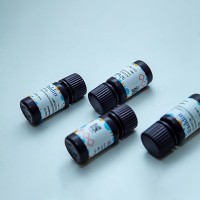In Situ Hybridization Within the CNS Tissue: Combining In Situ Hybridization with Immunofluorescence
互联网
672
In situ hybridization (ISH) is a useful method to investigate de novo mRNA expression in tissue sections. The high specificity and sensitivity of this technique combined with the great preservation of tissue and cellular morphology conferred by fixatives such as 4% paraformaldehyde make ISH a tool of choice for detecting genes of interest in individual cells in the central nervous system (CNS). Here, we provide a step-by-step protocol for a novel method that combines radioactive ISH with immunofluorescence on the same tissue section to identify cell populations expressing selected mRNA transcripts. This novel method has several major advantages over previously described double-labeling light microscopic methods combining enzymatic immunohistochemistry and ISH, including: (1) complete protection against loss of hybridization signal that normally occurs during the immunoenzymatic reaction, (2) improved immunolabeling sensitivity due to the proteinase K (PK) digestion step during ISH, (3) detection of several proteins specific for different cell populations on the same tissue section, and (4) counterstaining of tissue sections without affecting visualization of immunolabeling. This new method will be particularly useful for investigators looking to identify cell populations producing mRNAs expressed in low abundance, such as cytokines, chemokines, and growth factors, in the intact and injured/diseased mammalian CNS.








